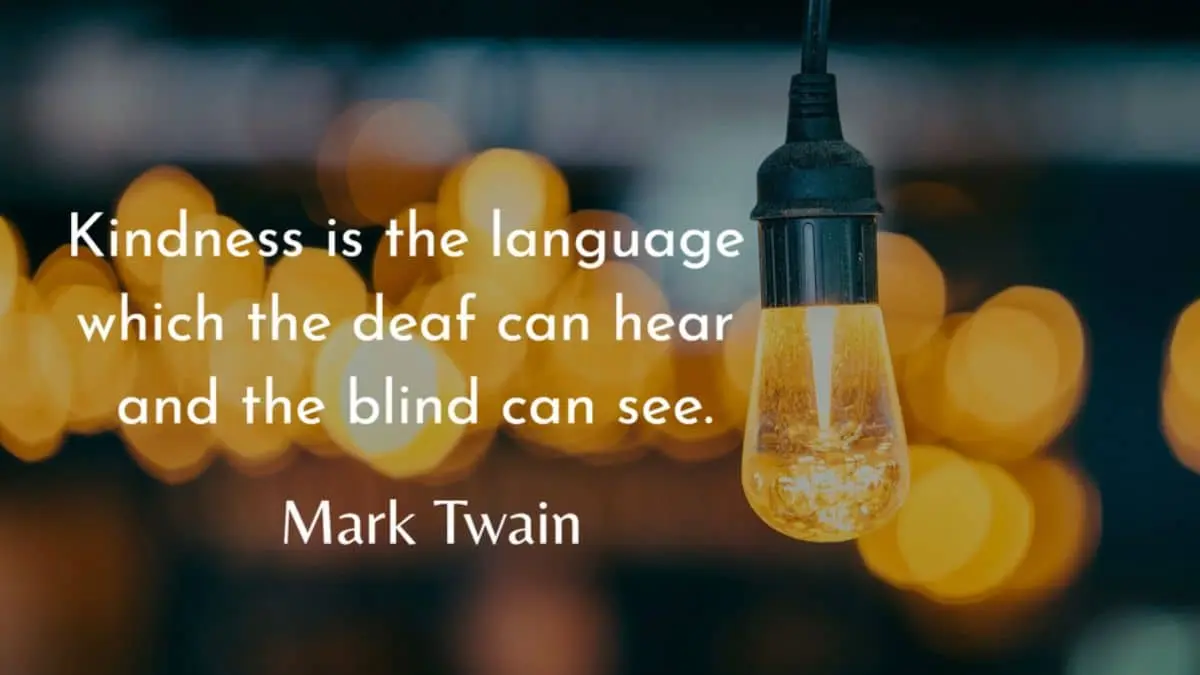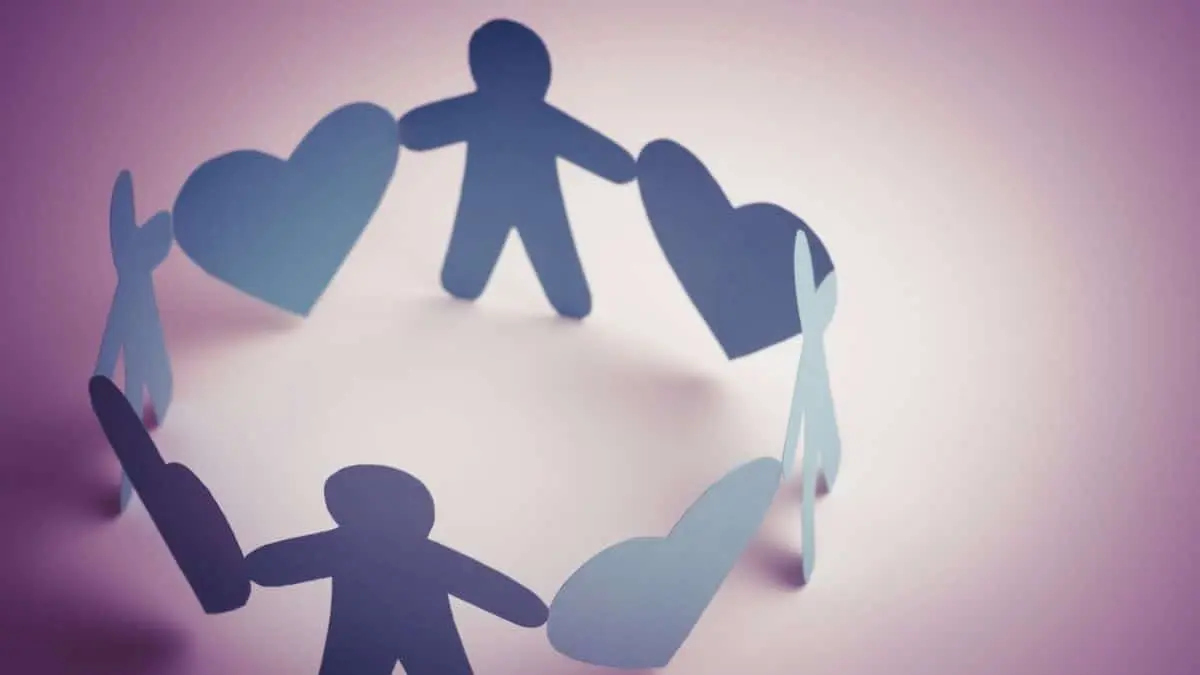“Kindness is the language which the deaf can hear and the blind can see.” This insightful quote by Mark Twain illustrates the universal power of kindness. Twain, known for his wit and wisdom, succinctly captures the idea that kindness transcends physical limitations and barriers, resonating with people of all backgrounds and circumstances. In a world that often feels divided, his words remind us of the unifying nature of compassion. This article explores the multifaceted impact of kindness, how it bridges differences, strengthens relationships, and promotes a healthier society.
Understanding the Metaphor
When Mark Twain described kindness as a language that “the deaf can hear and the blind can see,” he was emphasizing its universal comprehensibility. The metaphor portrays kindness as a form of communication that transcends sensory barriers and linguistic limitations, a message that can reach anyone regardless of their physical abilities or personal background.
- Language Beyond Words:
Kindness operates outside the constraints of spoken language. A warm smile, a gentle touch, or a thoughtful gesture can express empathy and understanding where words fail. These acts communicate directly to the heart, fostering a shared sense of humanity. - Transcending Physical Limitations:
The metaphor emphasizes that acts of kindness can be perceived through more than just sight or sound. A person who cannot see or hear can still feel the warmth of a kind action through its emotional impact. For instance, a helping hand extended to someone in need, or a supportive message, reaches beyond the barriers of sensory perception. - Breaking Down Cultural Differences:
Kindness is a language understood across cultural divides. Despite differences in customs, beliefs, and languages, kindness communicates acceptance, understanding, and care. A gesture of kindness can be a bridge across borders and boundaries, uniting people through shared human values. - A Call to Action:
Twain’s metaphor also calls upon us to embrace kindness as a universal language, urging us to find ways to connect with others through compassion. It reminds us that even small acts can have a far-reaching impact and challenges us to be the conduit through which kindness flows to everyone around us.

The Universality of Kindness
Kindness transcends geographical borders, cultural differences, and societal norms, resonating with people from all walks of life. Its universality is grounded in the shared human experience, making it a language that speaks to the heart of all.
- A Global Connector
- Kindness bridges cultural divides and unites people through simple gestures and acts. In cultures worldwide, expressions of goodwill—such as offering help to strangers, sharing meals, or providing shelter—are celebrated and cherished.
- Even in situations where language barriers exist, a smile or a friendly wave communicates warmth and approachability.
- A Timeless Value
- Across history, kindness has been upheld as a core virtue by diverse societies and belief systems. Ancient philosophers and religious teachings emphasize compassion and empathy as moral imperatives.
- Whether in ancient texts like Confucius’ Analects or modern movements like random acts of kindness, the principle remains timeless.
- Natural Human Tendency
- Studies in evolutionary psychology and neuroscience suggest that kindness is an innate human trait. Humans are wired for cooperation and empathy because they strengthen social bonds and improve group survival.
- Observing acts of kindness can prompt individuals to feel uplifted and inspired to emulate them, creating a positive feedback loop.
- Practical Examples in Everyday Life
- Everyday acts like offering a seat on the bus, sharing food, or providing directions embody the spirit of kindness, reinforcing the idea that it doesn’t require grand gestures.
- Kindness in the workplace—through listening actively, acknowledging colleagues’ efforts, or sharing knowledge—contributes to a healthier, more collaborative environment.
- Transformative Effects
- The contagious nature of kindness means that a single act can set off a ripple effect, inspiring further kindness in others.
- Whether towards a loved one, a stranger, or oneself, kindness fosters a sense of belonging, empathy, and interconnectedness that echoes around the world.
Kindness in Different Contexts
Kindness manifests differently depending on the context in which it is expressed. While the basic principle remains the same, its impact can vary based on personal relationships, professional environments, and public spaces. Understanding how kindness operates in these different realms can help us appreciate its power to transform both individual lives and entire communities.
- Personal Relationships
- Family and Friends: Acts of kindness within close relationships, such as actively listening to a loved one or offering emotional support, strengthen bonds and build trust. For instance, celebrating a friend’s success or comforting a family member during difficult times can deepen connections.
- Romantic Relationships: Small, considerate gestures like sharing a note of appreciation or planning a thoughtful surprise can foster intimacy and a sense of security.
- Professional Environment
- Colleagues and Peers: Kindness in the workplace improves morale and productivity. Examples include offering constructive feedback, acknowledging a coworker’s contributions, or assisting someone with a challenging task.
- Leadership: Managers who lead with kindness, by empathizing with employees and showing genuine care, cultivate a more inclusive, motivated, and loyal workforce.
- Public Spaces
- Community Engagement: Volunteering time, donating resources, or simply greeting neighbors with a smile can create a more cohesive and supportive neighborhood.
- Social Media: In a digital age, kindness extends to online platforms. Spreading positive messages, offering encouragement, or defending someone against cyberbullying can create a more respectful online community.
- Global Impact
- Humanitarian Efforts: Charitable acts like funding education programs, supporting disaster relief, or promoting mental health awareness can make a significant difference in underserved communities worldwide.
- Environmental Kindness: Showing kindness to the planet by conserving resources, reducing waste, and supporting sustainable practices benefits the environment and promotes a better quality of life for all.

Conclusion
Mark Twain’s timeless observation, “Kindness is the language which the deaf can hear and the blind can see,” underscores the universal power of compassion. Throughout this exploration, we’ve seen how kindness transcends sensory barriers, cultural differences, and situational contexts, making it a language that every human being can understand and share.
Also Read: It is a rough road that leads to the heights of greatness.



